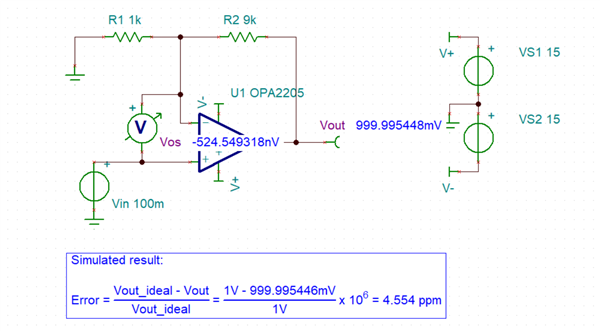Other Parts Discussed in Thread: TINA-TI, OPA205
Hello everyone,
I am trying to do the Error budget analysis for the OPA2205 op amp. However, my calculations and simulation does not match. Taking a non-inverting amplifier circuit as an example.
Here is my simulation:
For this simulation, I used TINA-TI program. Because OPA2205 is not readily included in TINA-TI's Op Amp library, I have downloaded its model from TI's product website:
https://www.ti.com/product/OPA2205#design-development##design-tools-simulation
Once downloaded, I extracted the file SBOMB98.ZIP and follow the instruction from this video from TI:
I have also attached the model file OPA205.TSM and the circuit file OPA2205.TSC
--
As for my calculation, I tried to calculate the error resulting from different parameters of the OPA2205 op amp. For example, the input offset voltage of OPA2205 (for +/-15V operation) is Vos = 5uV.
Therefore, the error at output (due to input offset voltage) for the non-inverting circuit above will be:
This is only the calculation result from one parameter. I also intended to include other parameter's effect such as input bias & offset currents, CMRR & PSRR, etc. However, it is already 10 times larger than the simulation result. Therefore I am having a hard time trying to figure out why my calculation is not matching with my simulation result.
Thank you very much. I am trying to learn so any suggestions, corrections would be very much appreciated.
Phan Thanh Phong
--



